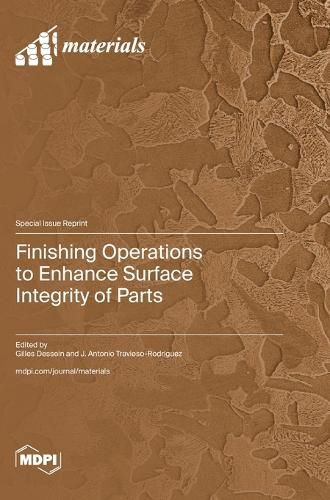Readings Newsletter
Become a Readings Member to make your shopping experience even easier.
Sign in or sign up for free!
You’re not far away from qualifying for FREE standard shipping within Australia
You’ve qualified for FREE standard shipping within Australia
The cart is loading…






This title is printed to order. This book may have been self-published. If so, we cannot guarantee the quality of the content. In the main most books will have gone through the editing process however some may not. We therefore suggest that you be aware of this before ordering this book. If in doubt check either the author or publisher’s details as we are unable to accept any returns unless they are faulty. Please contact us if you have any questions.
Surface integrity management is remarkably important when metal alloys are used to manufacture relevant parts. Advanced materials such as titanium, nickel alloys, non-ferrous alloys, or special steels make surface integrity preservation after machining particularly difficult. Consequently, thorough finishing techniques are required to rectify the surface integrity. Engineering surfaces that exemplify the importance of surface integrity control are typically found in the transportation industry. Pieces formed using complex curved surfaces, such as turbine blades or landing gears, and molds and dies for upsetting operations are good examples. These kinds of parts are often manufactured through 3- or 5-axis machining with the aid of successive adjacent passes of hemispherical tools, whereas this ball-end milling strategy allows one to achieve complex surfaces by following the desired shape through NC interpolations generated by a CAM (it also has deep constraints). In this context, processes such as burnishing, honing, plateau-honing, grinding, and shot-peening can contribute to improving the described surfaces in terms of texture, residual stress, and hardness, and are easily maneuverable from a procedural point of view. This Special Issue collected the research results on these kinds of finishing processes, which are very important to the transportation industry.
$9.00 standard shipping within Australia
FREE standard shipping within Australia for orders over $100.00
Express & International shipping calculated at checkout
This title is printed to order. This book may have been self-published. If so, we cannot guarantee the quality of the content. In the main most books will have gone through the editing process however some may not. We therefore suggest that you be aware of this before ordering this book. If in doubt check either the author or publisher’s details as we are unable to accept any returns unless they are faulty. Please contact us if you have any questions.
Surface integrity management is remarkably important when metal alloys are used to manufacture relevant parts. Advanced materials such as titanium, nickel alloys, non-ferrous alloys, or special steels make surface integrity preservation after machining particularly difficult. Consequently, thorough finishing techniques are required to rectify the surface integrity. Engineering surfaces that exemplify the importance of surface integrity control are typically found in the transportation industry. Pieces formed using complex curved surfaces, such as turbine blades or landing gears, and molds and dies for upsetting operations are good examples. These kinds of parts are often manufactured through 3- or 5-axis machining with the aid of successive adjacent passes of hemispherical tools, whereas this ball-end milling strategy allows one to achieve complex surfaces by following the desired shape through NC interpolations generated by a CAM (it also has deep constraints). In this context, processes such as burnishing, honing, plateau-honing, grinding, and shot-peening can contribute to improving the described surfaces in terms of texture, residual stress, and hardness, and are easily maneuverable from a procedural point of view. This Special Issue collected the research results on these kinds of finishing processes, which are very important to the transportation industry.